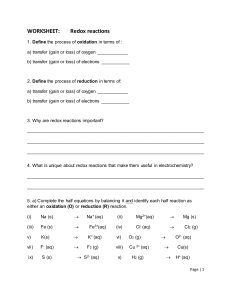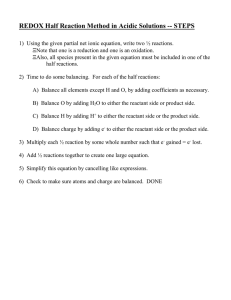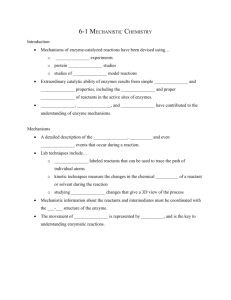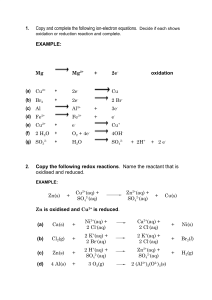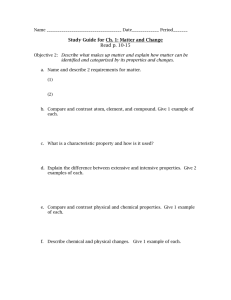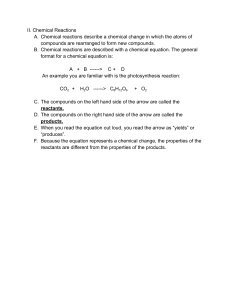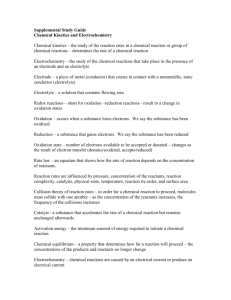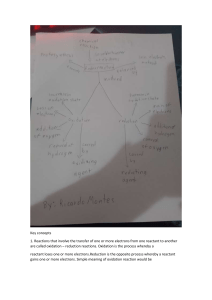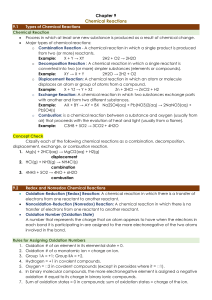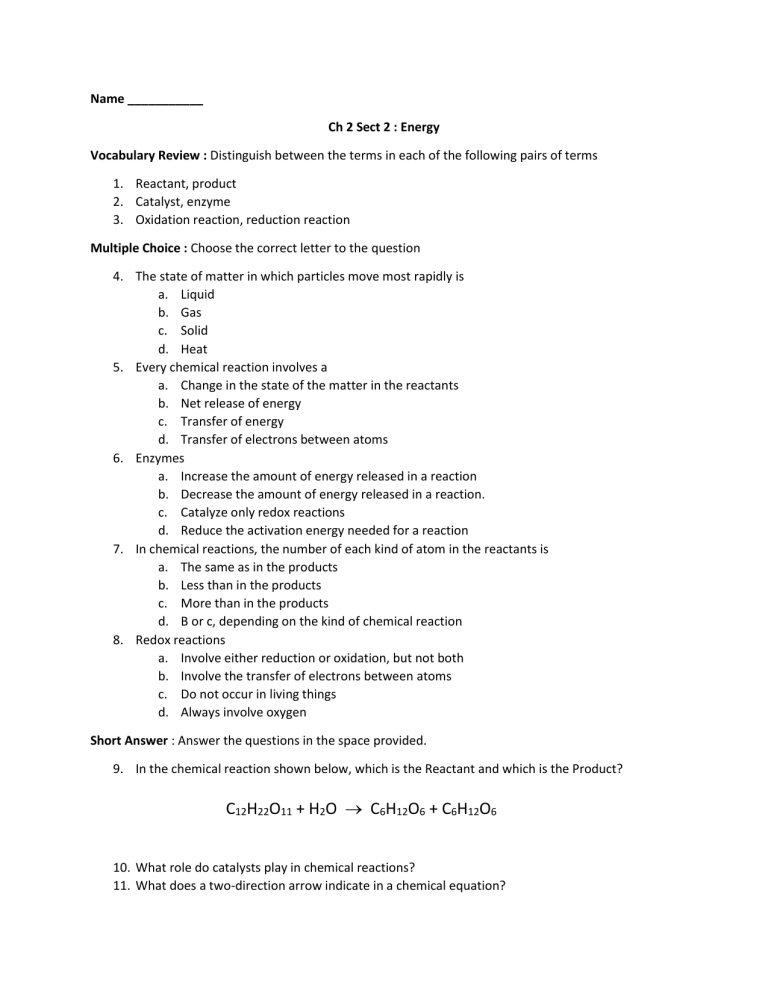
Name ___________ Ch 2 Sect 2 : Energy Vocabulary Review : Distinguish between the terms in each of the following pairs of terms 1. Reactant, product 2. Catalyst, enzyme 3. Oxidation reaction, reduction reaction Multiple Choice : Choose the correct letter to the question 4. The state of matter in which particles move most rapidly is a. Liquid b. Gas c. Solid d. Heat 5. Every chemical reaction involves a a. Change in the state of the matter in the reactants b. Net release of energy c. Transfer of energy d. Transfer of electrons between atoms 6. Enzymes a. Increase the amount of energy released in a reaction b. Decrease the amount of energy released in a reaction. c. Catalyze only redox reactions d. Reduce the activation energy needed for a reaction 7. In chemical reactions, the number of each kind of atom in the reactants is a. The same as in the products b. Less than in the products c. More than in the products d. B or c, depending on the kind of chemical reaction 8. Redox reactions a. Involve either reduction or oxidation, but not both b. Involve the transfer of electrons between atoms c. Do not occur in living things d. Always involve oxygen Short Answer : Answer the questions in the space provided. 9. In the chemical reaction shown below, which is the Reactant and which is the Product? C12H22O11 + H2O C6H12O6 + C6H12O6 10. What role do catalysts play in chemical reactions? 11. What does a two-direction arrow indicate in a chemical equation? 12. In the chemical reaction shown below, which substance is reduced and which substance is oxidized? Na + Cl Na+ + Cl13. Sucrose, or table sugar, can react with water to form two other compounds, glucose and fructose. However, when you add sugar to a glass of water, this reaction proceeds extremely slowly. Why does it proceed slowly, and what else is needed to speed up the reaction. Structure and Function : Use the figure to answer the following questions. The graph below represents the energy changes that occur as a chemical reaction progress. 14. What is represented by arrow A? 15. What is represented by arrow B? 16. Is energy absorbed or released in this reaction? Explain your answer.
